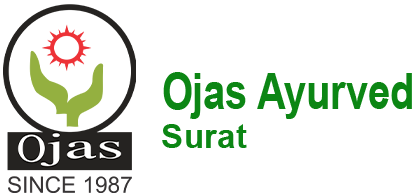Overview
- A migraine is a severe headache that can cause severe throbbing pain or a pulsing sensation, usually on one side of the head.
- It is often accompanied by nausea, vomiting and sensitivity to light and sound.
- Migraine attacks can last hours to days, and a painful headache interferes with daily activities.
Causes of migraine
- It can depend on genes.
- Family history.
- Certain types of foods – spicy, oily.
- Skipping meals, irregular sleep, lack of physical activities.
- Stress, fear and anxiety.
- Environmental factors.
Symptoms
Migraine can progress through four stages. Prodrome, aura, attack, and postdrome but not everyone goes through all four stages.
-
Prodrome:
One or two days before a migraine, might notice few changes that warn of upcoming migraine.
Symptoms include.
- Mood changes.
- Constipation.
- Food cravings.
- Increased urination.
- Neck stiffness.
-
Aura
For some people, an aura might occur before or during migraine.
Symptoms are:
- Vision changes
- Pins sensation in an arm or leg.
- Weakness or numbness in the face.
- Difficulty in speaking.
-
Attack
A migraine usually lasts 4 to 72 hours if untreated. Migraine occurs rarely or several times a month.
Symptoms are:
- Pain usually on one side of the head or often on both sides.
- Throbbing or pulsing sensation.
- Sensitivity to light or sound.
- Nausea and vomiting.
-
Postdrome
- After a migraine attack might feel drained, confused and washed out for up to a day.
- Sudden head movement might bring on the pain again.
The Ayurved aspect of migraine
Definition:
- अर्ध: Half side of the head.
- अवभेदक: Penetrating or breaking pain.
-
Causes:
रुक्ष अत्य अध्यशनात् पूर्ववातावश्याय मैथुनै: |
वेगसंधारण आयास व्यायामै: कुपितो अनिल: || चरकसंहिता उतरतंत्र 9/74
- Excessive consumption of dry substances.
- Consumption of excessive food.
- Exposure to easterly breeze or fog.
- Excessive sex activity.
- Suppression of natural urges.
- Exhaustion or exercise.
Pathogenesis:
केवल : सकफो वा अर्ध गृहीत्वा शिरस: तत: | चरक संहिता उतरतंत्र 9/75
- Vata either singly or along with kapha, affecting half of the head produces severe pain.
Symptoms:
मन्या अभ्र शंख कर्ण अक्षि ललाट अर्धे अति वेदनाम् ||
शस्त्र अरिणिनिभां कुर्यात् तीव्रां स: अर्धावभेदक: |
नयनं वा अथवा श्रोत्रम् अतिवृध्धो विनाशयते | चरक संहिता उतरतंत्र 9/75
- Pain is felt like injury by a sharp weapon in the neck, eyebrow, temple, ear, eye, and forehead of the affiliated half of the head.
- Blindness or deafness occurs when the condition may be severe.
Treatment:
चतु: स्नेह उतमा मात्रा शिर: काय: विरेचनम् |
नाडीस्वेदो घृतं जीणँ बस्तिकर्म अनुवासनम् ||
उपनाह: शिरोबस्ति: दहनं च अत्र शस्यते |
प्रतिश्याये शिरोरोगे यत् उदिष्टं चिकित्सितम् || चरक संहिता उतरतंत्र 9/75
- The 4 snehas ( taila, ghrita, vasa, majja) in the proper dosage.
- Purgation.
- Purificatory errhines.
- Steam procedure.
- Old ghee.
- Oil enemas.
- Poultices.
- External oil application.
- Cautery.
- The management said that pratishyaya(rhinitis)and Shiro rog (headache) should also be employed appropriately.

